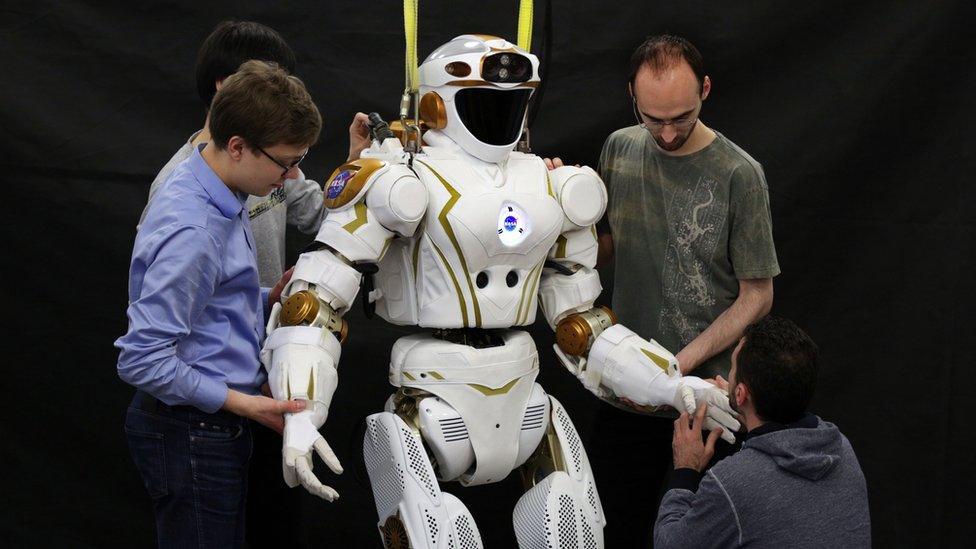Edinburgh team helping to design robots for Mars
- Published
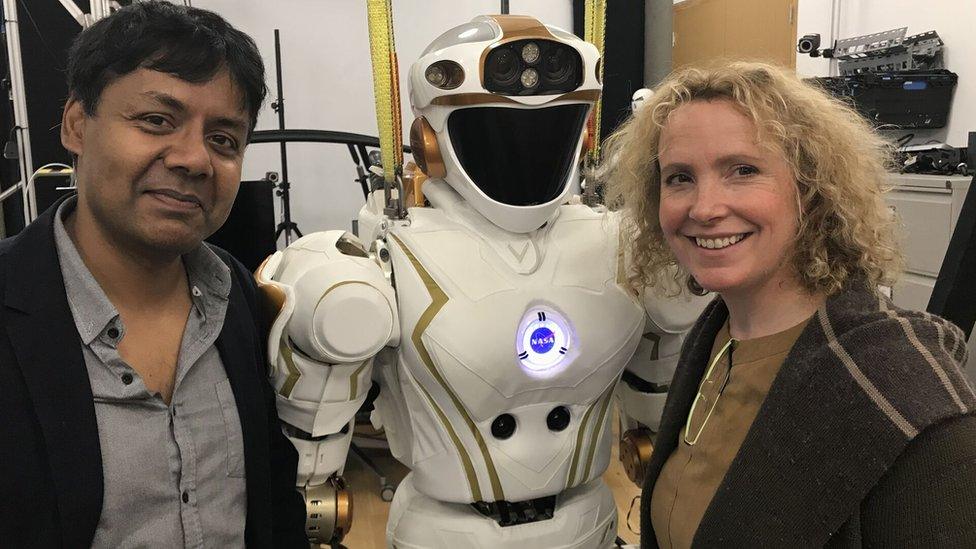
Prof Sethu Vijayakumar, Nasa robot Valkyrie and Brainwaves presenter Pennie Latin
Roboticists try to avoid building "creepy" human-like robots, according to a scientist involved in developing robots for future missions to Mars.
Prof Sethu Vijayakumar is part of a team at the University of Edinburgh working with a handful of other organisations on Nasa's Valkyrie.
He said Valkyrie's ability to move like a human was a major advantage.
But he added that going further to make robots look even more humanoid can make some people feel uncomfortable.
Speaking to BBC Radio Scotland's Brainwaves programme, Prof Vijayakumar: "There is a whole area of research on this domain.
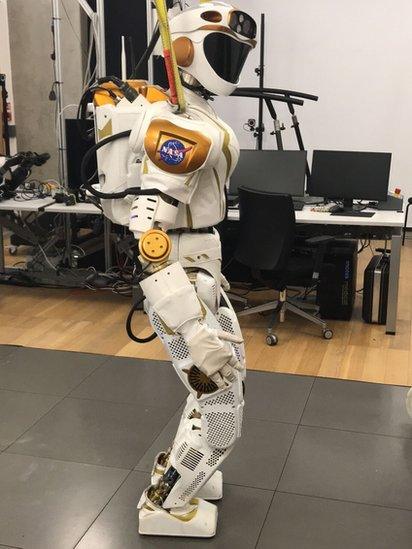
The Valkyrie project forms part of Nasa's effort to send robots to Mars
"There is something called the 'uncanny valley'."
The term was first used in 1970 by Japanese roboticist Masahiro Mori to describe a sudden dip in a person's comfort levels with a robot's appearance.
Prof Vijayakumar said people can feel uncomfortable with robots that look very similar too, but not exactly like, a human being. However, acceptance levels rise again when a person cannot differentiate between a robot and a human.
He said: "It is a scenario where you start with something very inanimate. People think 'oh, that is a robot'.
"As you start moving more towards human-like, the acceptance initially goes up and then when it becomes extremely or very similar to a human the acceptance actually goes down."
He added: "It's surprising that a toy like a dog or a bear or a seal is more accepted as a robot rather than a human, which is kind of semi-connected to us in terms of its resemblance to a human, but yet people almost think of it as creepy."
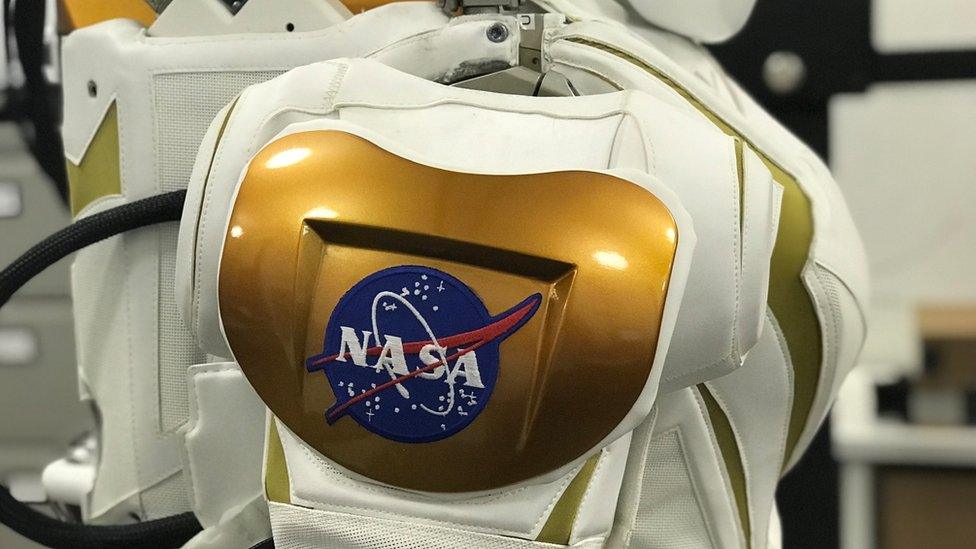
Detail on Valkyrie
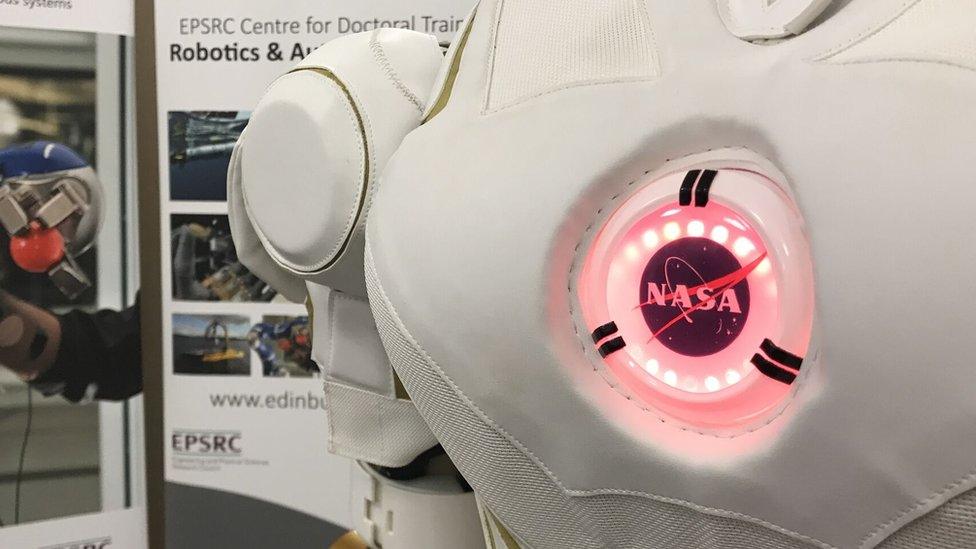
The robot costs more than £1.8m to build
The University of Edinburgh's Centre for Robotics is one of the few organisations helping to develop Valkyrie, 5ft 11in tall machine that costs almost £2m to build.
Nasa hopes to one day send robots to Mars where they will prepare habitation for a later arrival of human astronauts.
Prof Vijayakumar, who is also a judge on the BBC's Glasgow-made Robot Wars series, said using robots that walk on two legs made sense.
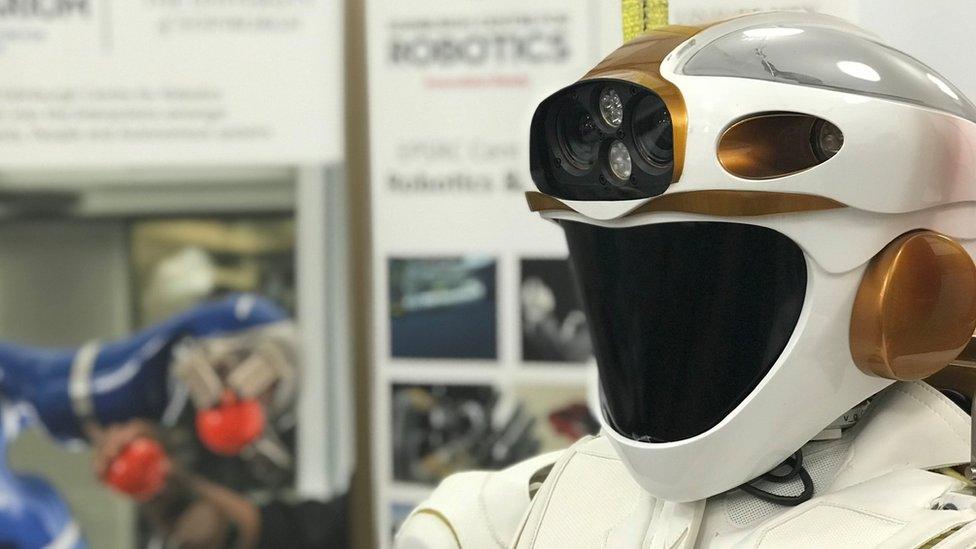
The University of Edinburgh is one of a handful of organisations working on Valkyrie
He said: "Bipeds are very good at moving in the same space that is designed for humans.
"We are very good at squeezing through narrow spaces, climbing steps and tackling variable footholds.
"If you have a robot with wheels or is a quadruped then you have to redesign the entire space for the robot.
The full interview with Prof Vijayakumar can be heard on Brainwaves from 13:30 on Wednesday.
- Published11 January 2018
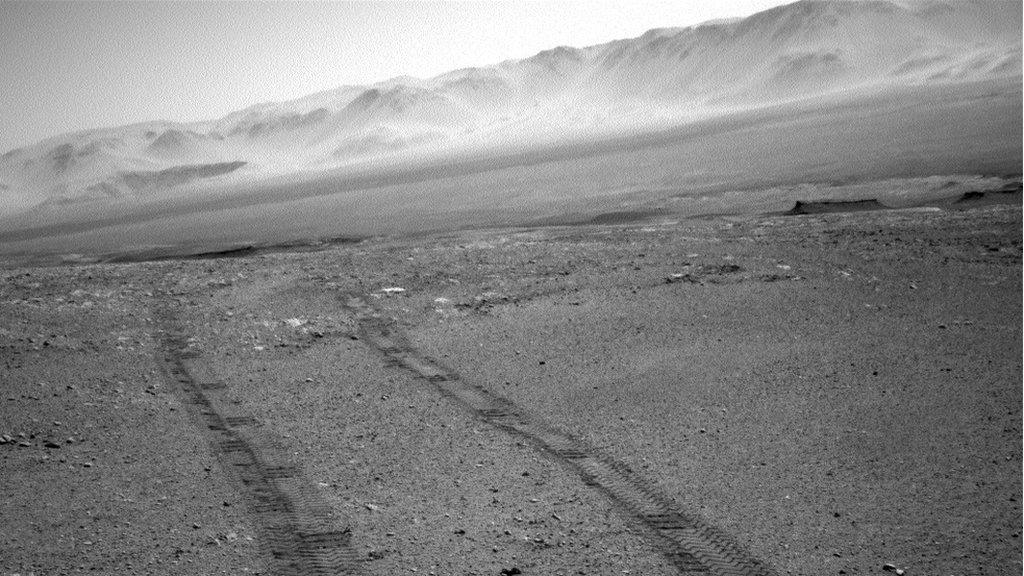
- Published4 May 2016
